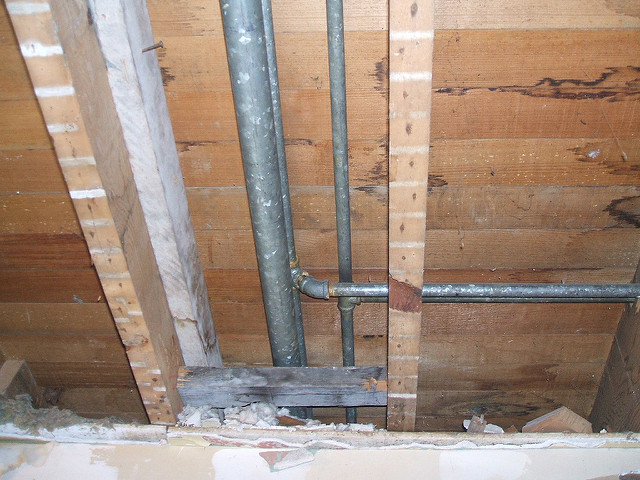Guide To Water Leakage Discovery In Your Home
Guide To Water Leakage Discovery In Your Home
Blog Article
The article following next in relation to Detecting hidden plumbing leaks is extremely attention-grabbing. You should investigate it.

Early detection of dripping water lines can reduce a potential catastrophe. Some tiny water leaks may not be noticeable.
1. Analyze the Water Meter
Every house has a water meter. Inspecting it is a proven way that aids you discover leakages. For beginners, shut off all the water resources. Guarantee no one will flush, make use of the faucet, shower, run the washing equipment or dishwashing machine. From there, most likely to the meter and watch if it will transform. Because no person is using it, there ought to be no activities. If it moves, that suggests a fast-moving leak. If you find no changes, wait an hour or two as well as examine back once more. This means you may have a sluggish leakage that can also be underground.
2. Check Water Consumption
Examine your water costs and also track your water consumption. As the one paying it, you ought to see if there are any type of inconsistencies. If you detect sudden changes, despite your consumption being the same, it indicates that you have leakages in your plumbing system. Keep in mind, your water costs should fall under the same range monthly. An unexpected spike in your expense suggests a fast-moving leakage.
On the other hand, a consistent boost each month, even with the same habits, reveals you have a slow-moving leakage that's likewise slowly escalating. Call a plumber to extensively inspect your residential property, particularly if you feel a warm location on your floor with piping underneath.
3. Do a Food Coloring Examination
30% comes from bathrooms when it comes to water consumption. Test to see if they are running appropriately. Drop specks of food color in the storage tank and wait 10 minutes. If the color somehow infiltrates your bowl throughout that time without flushing, there's a leak between the storage tank as well as dish.
4. Asses Exterior Lines
Do not forget to examine your outside water lines too. Test faucets by connecting a yard pipe. Should water seep out of the link, you have a loose rubber gasket. Change this and make sure all connections are limited. It will certainly help obtain it professionally took a look at and also preserved each year if you've obtained a lawn sprinkler system. One tiny leakage can throw away tons of water as well as spike your water costs.
5. Analyze the situation as well as evaluate
Homeowners ought to make it a routine to examine under the sink counters and even inside cupboards for any type of bad odor or mold and mildew development. These 2 warnings indicate a leak so timely interest is needed. Doing regular examinations, even bi-annually, can save you from a major problem.
Examine for discolorations and weakening as most devices as well as pipes have a life expectancy. If you believe dripping water lines in your plumbing system, don't wait for it to escalate.
Early discovery of leaking water lines can minimize a possible catastrophe. Some tiny water leakages might not be visible. Inspecting it is a guaranteed way that aids you find leaks. One little leak can waste bunches of water as well as spike your water costs.
If you presume leaking water lines in your plumbing system, do not wait for it to intensify.
WARNING SIGNS OF WATER LEAKAGE BEHIND THE WALL
PERSISTENT MUSTY ODORS
As water slowly drips from a leaky pipe inside the wall, flooring and sheetrock stay damp and develop an odor similar to wet cardboard. It generates a musty smell that can help you find hidden leaks.
MOLD IN UNUSUAL AREAS
Mold usually grows in wet areas like kitchens, baths and laundry rooms. If you spot the stuff on walls or baseboards in other rooms of the house, it’s a good indicator of undetected water leaks.
STAINS THAT GROW
When mold thrives around a leaky pipe, it sometimes takes hold on the inside surface of the affected wall. A growing stain on otherwise clean sheetrock is often your sign of a hidden plumbing problem.
PEELING OR BUBBLING WALLPAPER / PAINT
This clue is easy to miss in rooms that don’t get much use. When you see wallpaper separating along seams or paint bubbling or flaking off the wall, blame sheetrock that stays wet because of an undetected leak.
BUCKLED CEILINGS AND STAINED FLOORS
If ceilings or floors in bathrooms, kitchens or laundry areas develop structural problems, don’t rule out constant damp inside the walls. Wet sheetrock can affect adjacent framing, flooring and ceilings.
https://www.servicemasterbyzaba.com/blog/how-to-detect-water-leakage-in-walls/

Do you really like reading up on Finding hidden leaks? Create a remark further down. We'd be pleased to hear your ideas about this write-up. In hopes that you come back again soon. I beg you take the time to promote this post if you enjoyed it. Thanks a lot for taking the time to read it.
Report this page